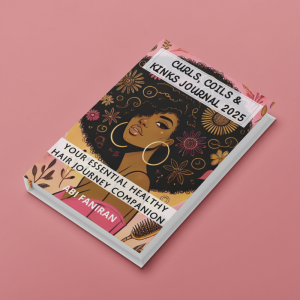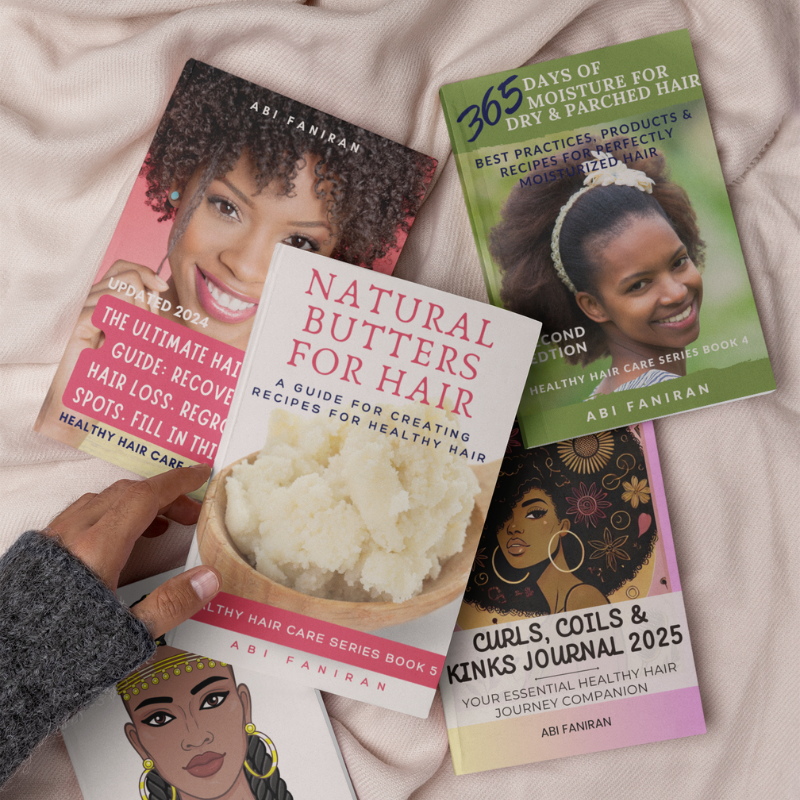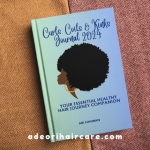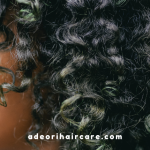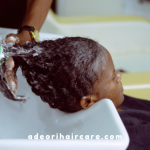Postpartum hair thinning is one of those unexpected changes that can catch any new mother off guard.
One minute, your hair is full, vibrant, and growing faster than ever during pregnancy.
Next, you’ll notice hair all over the shower floor, in your brush, and on your pillowcase. This happens to many new mothers.
Postpartum hair loss is a common, temporary experience triggered by hormonal shifts after childbirth, and while it’s normal, that doesn’t make it any less stressful.
The good news is that there are natural, effective ways to care for your hair, support healthy regrowth, and feel good again in your skin and scalp.
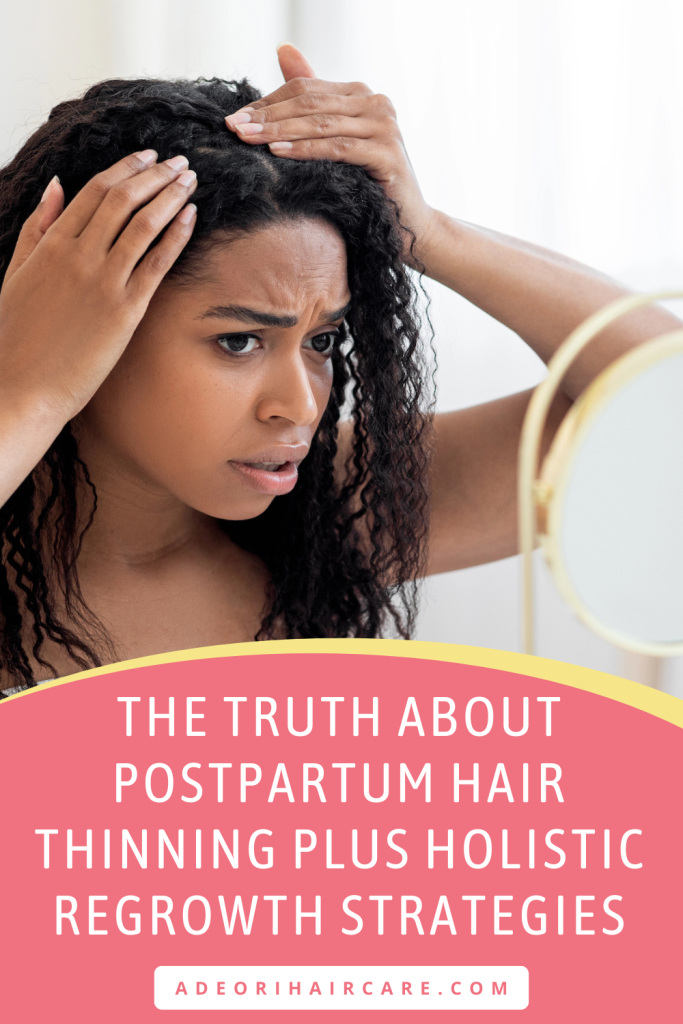
What is Postpartum Hair Thinning?
Postpartum hair thinning, aka postpartum shedding, is a form of telogen effluvium.
It occurs when a larger-than-normal number of hairs shift into the hair growth cycle’s resting (shedding) phase.
This typically happens 2 to 4 months after giving birth, with most women noticing shedding around the hairline or crown.
The hair loss can feel dramatic, but in most cases, it begins to slow down by 6 months postpartum and resolves completely by your baby’s first birthday.
Why Does it Happen?
During pregnancy, your body experiences elevated estrogen levels, which prolongs your hair’s growth phase.
As a result, your hair may appear thicker and fuller. After childbirth, estrogen levels drop rapidly, and the hairs that were “paused” in the growth phase suddenly shift into shedding mode.
Other factors that contribute to postpartum hair thinning include:-
- Physical and emotional stress from childbirth and early parenting.
- Nutrient depletion, especially iron, zinc, biotin, and protein.
- Disrupted sleep cycles.
- Stopping prenatal vitamins.
- Thyroid fluctuations in some postpartum women.
How to Tell if it’s More Than Postpartum Hair Thinning
While postpartum shedding is normal, it’s important to know when it might be something else.
If your shedding lasts longer than 12 months, if you notice bald patches, or if your scalp feels itchy, inflamed, or painful, consult with a dermatologist or physician.
Conditions like thyroid dysfunction, iron-deficiency anemia, or autoimmune-related hair loss may also be an issue.
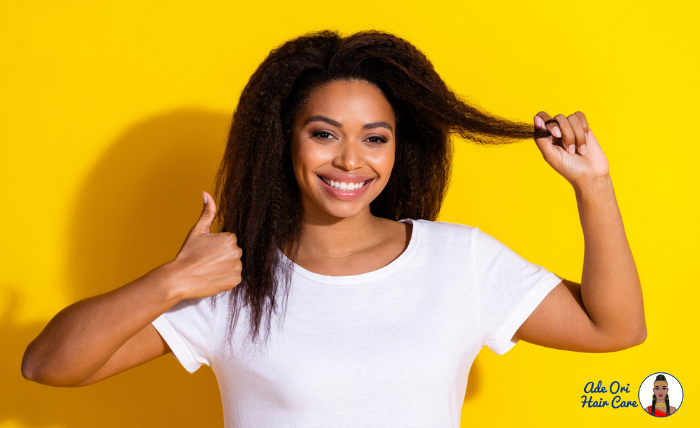
How to Support Hair Regrowth Naturally
Although you can’t completely prevent postpartum shedding, you can support your scalp, nourish your follicles, and create a healthy environment for stronger, fuller hair to grow back in.
1. Nourish from Within
- Continue taking prenatal or postnatal vitamins rich in iron, biotin, zinc, and vitamin D.
- Eat a nutrient-dense diet: leafy greens, sweet potatoes, eggs, beans, nuts, and fish are excellent for hair growth.
- Stay hydrated. Your hair and scalp need it too.
Explore More: The Curls, Coils & Kinks Journal includes weekly meal tracking, supplement logs, and scalp care goals to help you stay consistent and focused on your regrowth journey.
2. Stimulate the Scalp
A healthy scalp is the foundation of healthy hair.
- Use natural oils like rosemary, peppermint, or black seed oil, which are known to promote circulation.
- Try scalp massages 5 to 10 minutes daily to boost blood flow and follicle activity.
- Exfoliate gently once a week to remove buildup and open pores.
3. Be Gentle with Your Hair
- Switch to a sulfate-free, moisture-rich shampoo.
- Detangle with care using a wide-tooth comb or your fingers on damp hair with slip.
- Dry hair with a microfiber towel or soft cotton T-shirt.
- Avoid tight styles, excessive heat, or daily manipulation. Instead, opt for protective styling like loose twists, gentle buns, or silk-lined wraps, which can minimize shedding and breakage while encouraging regrowth.
4. Track Your Progress and Create a Routine
Postpartum can feel like survival mode, but setting a weekly or bi-weekly hair care routine gives you structure and motivation.
- Track how much you’re shedding and what products you’re using.
- Set realistic goals like 30 days of consistent moisture or one scalp massage per day.
- Celebrate small wins like less breakage, new baby hairs, or better curl definition.
The Curls, Coils & Kinks Journal was designed for moments like this. Use it to document your journey, build a regimen, and feel proud of your progress.
What Not to Do
- Don’t panic. Your hair will grow back.
- Avoid harsh chemicals, excessive coloring, or over-styling.
- Don’t fall into DIY overload. Focus on consistency over quantity.
When to Seek Professional Help for Postpartum Hair Thinning
If your hair loss is extreme, persistent, or accompanied by fatigue, anxiety, or other health changes, consult a medical provider.
Testing your thyroid, iron levels, or hormone balance may be worth it.
Remember to Be Gentle With Yourself
Postpartum hair thinning is a temporary chapter in your motherhood journey, not a permanent reflection of your beauty or health.
Your hair will recover with patience, the right tools, and a little self-kindness.
Ready to take control of your regrowth journey?
I recommend the Hair Growth and Length Retention Bundle, which focuses on moisture, length retention, and preventing breakage. Learn more here.
Frequently Asked Questions About Postpartum Hair Thinning
How long does postpartum hair loss last?
Postpartum hair thinning typically begins around 2 to 4 months after giving birth and can last up to 6 months.
In most cases, shedding slows significantly by the time your baby is 12 months old.
Is postpartum hair loss permanent?
No, it’s not permanent. Postpartum shedding is a temporary phase triggered by hormonal shifts.
Your hair growth cycle usually returns to normal within a year, and new growth begins as the shedding slows.
What vitamins help with postpartum hair regrowth?
Key nutrients that support hair regrowth include biotin, iron, zinc, vitamin D, and collagen.
Continuing with a prenatal or postnatal multivitamin can help replenish what your body needs during recovery.
Can I prevent postpartum hair loss?
You may not be able to stop it entirely, but you can reduce its severity and support faster regrowth by maintaining a healthy diet, continuing your supplements, minimizing stress, and gently caring for your scalp and hair.
Should I cut my hair after giving birth?
Cutting your hair is entirely optional. A trim can make your hair feel healthier and reduce tangles or split ends, but it won’t prevent shedding.
Focus on creating a simple routine that supports regrowth and minimizes breakage.
When should I worry about postpartum hair loss?
If shedding lasts longer than 12 months, appears in bald patches, or is accompanied by symptoms like fatigue, mood changes, or scalp irritation, it’s a good idea to speak with a healthcare provider.
Conditions like thyroid imbalance or iron deficiency could be contributing.
Can natural hair care products help?
Yes. Products made with ingredients like rosemary, peppermint, aloe vera, and black seed oil can help stimulate the scalp and encourage regrowth.
Look for sulfate-free shampoos, light oils, and moisturizing leave-ins that support your hair’s health without weighing it down.
Is it safe to use hair growth oils or serums while breastfeeding?
Always check product labels and consult your doctor, but most natural oils (like castor oil, rosemary oil, or jojoba) are considered safe when used topically in moderation.
Avoid harsh chemicals or medicated treatments unless recommended by a professional.
Abi is the founder behind Ade Ori Hair Care and the Healthy Natural Hair Products ecosystem, a platform trusted by women seeking clean, effective solutions for textured hair. With over 10 years of hands-on experience, she combines research-backed insight, ingredient transparency, and natural formulations to help women nourish their curls from the inside out. She’s passionate about empowering women through DIY tools, holistic hair education, and a community-first approach. Learn more here.

